Perfect Dark is a critically-acclaimed First-person Shooter released in 2000. After tremendous success, a prequel began development in 2001. This prequel was originally planned for a Nintendo Gamecube release, but instead, that didn’t happen. After the Gamecube release didn’t occur, it was penned for an original Xbox release and that didn’t even happen. Eventually, the game was finally released on the Xbox 360 in 2005 and consequently named Perfect Dark Zero.
The original Perfect Dark was awarded high-to-mid 9s from critics and touted to be even better than Goldeneye 007, Rareware’s previous FPS offering. Perfect Dark introduced intelligent AI within a complex multi-player set-up that was touted as ahead of its time, an immersive campaign and a compelling, complex plot. Unfortunately, Perfect Dark Zero did not achieve the same critical acclaim. While reviews were mostly favourable, some critics gave the game above average ratings, and fans of the original were less than warm this time. More damning was the disparency within Rareware’s employees regarding their opinion of the finished game. “If the series was to survive, it seemed relatively obvious it needed to follow the original Perfect Dark’s formula.”
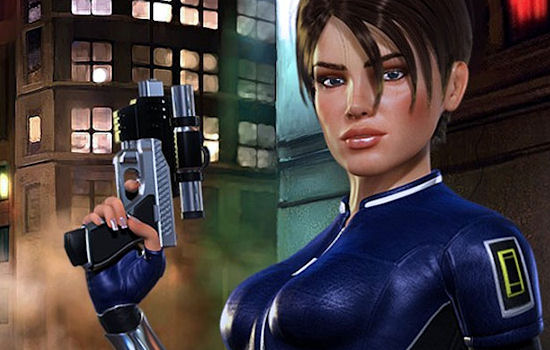
(Perfect Dark’s protagonist, Joanna Dark in the original game)
After the game’s release, Perfect Dark Zero’s director was rumoured to be working on a Massive Multi-player Online game, titled Cascade.While the director was occupied with that, Rare’s managers and founders began pursuing other immediate options to keep the Perfect Dark series in continual development on the Xbox 360.
A new writer and director – the director of Conker’s Bad Fur Day – was chosen to write another Perfect Dark game. He accepted the offer of writing for another Perfect Dark and immediately began working with a team of around twelve people” in an attempt to bring ideas and concepts to reality. “The new writer’s understanding of the previous games was one of the mistakes regarding the series’ two offerings, so an attempt to reform the series and protagonist was believed to be the appropriate way forward.
(Perfect Dark Zero’s protagonist Joanna Dark)
The Sequel’s Story
Stepping away from the mythical, graal-related over-dramatisation of Perfect Dark Zero, this was intended to be Science Fiction-orientated and a much more serious affair. “Since betrayal and generally dark themes were relatively common within the series”, the idea was to concentrate on how those instances would psychologically affect the protagonist. With a certain realism perhaps considered fleeting in the original, with Joanna Dark appearing somewhat light-hearted, almost James Bond-like, this made sense. It was also considered necessary to attempt to avoid Joanna Dark’s younger version in Perfect Dark Zero, as she was essentially fairly sensitive and naive.
In the version penned, Joanna Dark was insensitive and tougher, hardened by her years of murderousness;the Joanna Dark in the planned game was showing plenty of emotional scars” and psychological discomfort. She was very much walking-the-line between trained assassin and psychopathic monstrosity.
 (One of the concepts of Joanna Dark in the proposed sequel)
(One of the concepts of Joanna Dark in the proposed sequel)
Documents were written showcasing everything relevant to the game’s central campaign; these documents included levels, chapters, and even colour palettes – enabling artists to get a rough idea of the mood of stages. The original story penned was to feature exciting twists and turns and be intricate in its structure. “Certain parts of this written campaign featured surprising betrayal and even intriguing revelations of the Perfect Dark universe.” This game was, in fact, a sequel to the original set several years after the events of the original Perfect Dark.
The story managed to bring back familiar narrative elements, including the Skedar, a highly-evolved and aggressive reptilian species of extraterrestrial encountered in the original Perfect Dark, as well as other recognisable aliens. The central protagonist would be travelling around Earth and even into space as she uncovers another alien conspiracy. An initial level document illustrates she travels to Cairo, exploring tombs, then Russia and eventually, into space.
“The campaign was decided to include a team of allies which grows as the game progresses. Character names included: Mia, Milton, Sable and Pennington.” Eventually, Joanna Dark would be accompanied by her buddy Elvis, an extraterrestrial from the original Perfect Dark. Interestingly, the game’s writer suggested Elvis would have unfathomably betrayed Joanna Dark, eventually, much to the bemusement of fans of the original. Within the game’s reality, technology has grown significantly, allowing completely safe space travel. “Russia has begun investigating Saturn, and the protagonist, curious of their intentions investigates them.” A new character, known as prince Vox is the menacing antagonist behind-the-scenes.
Slightly later on in the campaign, Joanna Dark apparently realises the Russians have uncovered extraterrestrial activity on Titan, Saturn’s largest moon. “Beneath the surface of this icy environment, there is apparently an ancient civilisation which the Russians are consequently investigating.” After Joanna Dark is briefly incarcerated in a gulag, a soviet forced-labour camp, she escapes and infiltrates a planned expedition to Titan. This secretly stored space shuttle takes Joanna Dark to a space station orbiting the moon; “this space station, known as OSB Huygens, is actually a reference to Christian Huygens, the scientist who discovered Titan.”
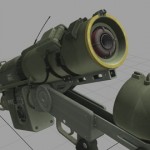
(A render of a rocket launcher in the proposed sequel)
“After the space station sequence, Joanna Dark and her companions converge on Titan’s surface and navigate beneath its frosty landscape to uncover the mysterious civilisation.” After some probing, Joanna Dark eventually discovers things aren’t as they seem and it hides a terrible secret – Titan is actually Earth from the future. “Roughly fifty years from Joanna’s time the Earth is attacked by extra-terrestrials using black hole technology;” this catapults Earth back billions of years to a period when Earth is much closer to Saturn. Earth is unfortunately pulled into its orbit and freezes over.
Another notable event which occurs is the reveal of the antagonist prince Vox’s identity. Prince Vox is actually the main protagonist, Joanna Dark, from the future – a fifty years older version, disguised as a male. “It is during these intriguing revelations Joanna Dark would have returned to the surface for the final campaign mission.” Here, perhaps equally notably, one of Joanna’s companions, Mia, reveals herself to be Mr. Blonde, a character from the original Perfect Dark who disguises himself as a man, but is actually an extraterrestrial known as a Skedar. “With Mr. Blonde’s story remaining mostly unknown, in the original Perfect Dark, he returns as one of the last remaining Skedar to claim his revenge.”
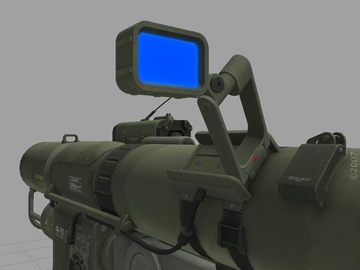
(Another render of a rocket launcher)
“As things progress, Joanna’s remaining companions are quickly killed and she herself is left severely injured and in a critical condition.” In the closing cinematic, Mr Blonde leaves in a Mayan spacecraft, an extraterrestrial flying saucer, leaving the protagonist to her alleged demise on Titan’s surface. “The final scene shows Joanna Dark looking out over the horizon with Saturn in the distance.” It wasn’t particularly determined how Joanna Dark survives the ending, but one designer mentioned she might have utilised advanced technology such as teleportation. However, the writer / director mentioned she might have realistically caused the planet’s doom rather than reverse it; “a tragic self-fulfilling prophecy, which, in general, wouldn’t have ended well for Joanna Dark.”
“All of the above happenings were tied to the project / potential game, Perfect Dark: Core”, as it was known. Intriguingly, this was actually only one of two games proposed by the writer / director; the second game was known as Perfect Dark: Vengeance. “Each release was touted as a half of an over-arching story of a Science Fiction epic. Each developed game was planned to be released back-to-back, with the process of development following along-the-lines of Hollywood movies” shot from books, like The Hunger Games, Lord of the Rings etc.
The Development
With the technology for Perfect Dark: Core already mostly developed – animations, models etc. they were hoping in hindsight to develop Perfect Dark: Vengeance. “The developers were hoping to create two fully-featured that would each stand on their own with an accompanying multi-player mode” developed alongside the campaign. “The Perfect Dark: Core game would have FPS mechanics defying the popular franchises like Call of Duty. The campaign’s world and flow were to be less linear allowing significantly more exploration.” Combat was deemed to be more dynamic, as opposed to scripted, allowing players greater control.
“Prototypes were shown by a designer that demonstrated these principles in action. One showcased the protagonist using physics-based, completely unscripted, interactions with the environment. The character could kick doors open, and if timed correctly would collide with an enemy, temporarily knocking them over.” The protagonist could also unleash a flurry of melee attacks in a combo, leading to a finisher. “In Perfect Dark: Core, the philosophy seemed to be that shooting was generally discouraged, while finding ways to utilise the environment was encouraged.” Players would be able to use the environment by shooting supports holding heavy objects which would land and crush enemies. As was the case with Perfect Dark and its prequel, Perfect Dark Zero, stealth was also considered a preferable option, also.
Various tools and weapons were uncovered, including standard firearms like rifles and shotguns and a rocket launcher, all with fully-rendered, animated and textured models available. Unusual grenades were also available which could slow down time. But, the most impressive addition was a mechanised suit Joanna Dark could pilot. “During certain sections, a dropship could be summoned to drop the mech for heavily-defended areas. The protagonist could even remotely control the mech, assigning it simple commands like ‘attack’ and ‘follow.'” It was nicknamed Talbot; “this was a nod towards an animator who worked on the project.” Interestingly, the Talbot was toted as initially hostile towards the player until it is defeated – then Joanna Dark could utilise it.
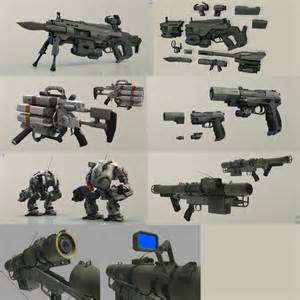
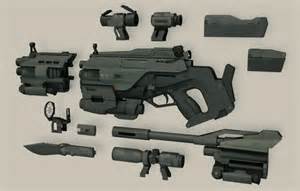
(Renders of in-game weapons created for the project)

(A render of the Talbot mechanised suit)
“The proposed game was considered to be ultra first-person, introducing parkour movement like hanging from ledges and jumping. A new melee system was also planned and implemented, as well as a camera system for a more intense, visceral feel.” Due to fears of players suffering motion-sickness, the developers spent a great deal of time, fine-tuning and balancing the first-person system until movements were more fluid. “Joanna Dark’s movements would react accordingly to stimuli such as explosions” and melee hits. Intriguingly, “despite the project being worked on for about a year, Joanna Dark was never given an in-game character model because the director wasn’t satisfied with any of the concepts the artists provided.” Instead, an enemy soldier was utilised to demonstrate any animations worked on.
“Perfect Dark: Core was in development between 2006 – 2007 with an increasingly smaller team as development progressed.” Unusually, it hadn’t actually been approved for production at the time. All the team were given freedom to explore their ideas and develop them into modifications, in order to get the green light from Microsoft, Rareware’s owner and consequently, publisher. “Staff admitted in the latter half of the project that the team became dangerously understaffed with artists being let go fairly regularly; this led to the remaining members concentrating on the development of an engine” and polishing any animations. Eventually the team was reduced to only a handful of people “in a deliberate effort by Rareware to reduce development costs and keep the game under-the-radar”, preventing Microsoft shutting down the project.
Cancelation Details
Months were spent attempting to convince Microsoft of the game’s potential and it ultimately came down to a meeting involving Rareware’s founders and the game’s director. They were joined by four people from Microsoft, including the corporate vice president of entertainment. During the meeting, Rareware naturally attempted to convince Microsoft of the game’s creative merit, but Microsoft was sadly unconvinced, “believing there were too many Sci-fi games in the market from their first-party line-up, like Halo 3 and Gears of War;” this was an area they’d apparently covered properly and they were adamant of that. “Microsoft sited underwhelming sales figures for Perfect Dark Zero as another reason the proposal was a risk. The project was turned down then and there and Perfect Dark’s sequel wasn’t to be.” Even though Perfect Dark: Core was not to be, the technology was fortunately utilised for another game, Banjo Kazooie: Nuts and Bolts.
After Perfect Dark: Core was dropped, the remaining members created two new concepts to reconfigure their ideas. “Firstly, there was a cartoon-like game with exaggerated physics.” Secondly, there was a Survival Horror game proposed utilising the parkour elements already developed, like climbing walls, walking across rooftops etc. “to escape from monsters from other dimensions.” Both of these projects like the Perfect Dark sequels were never accepted beyond their pitches. “The director and other central members left the company a few years later.”
Credit to DidyouKnowGaming?

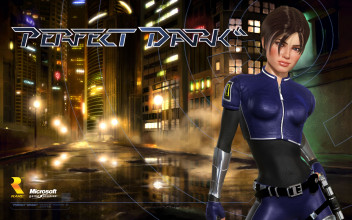
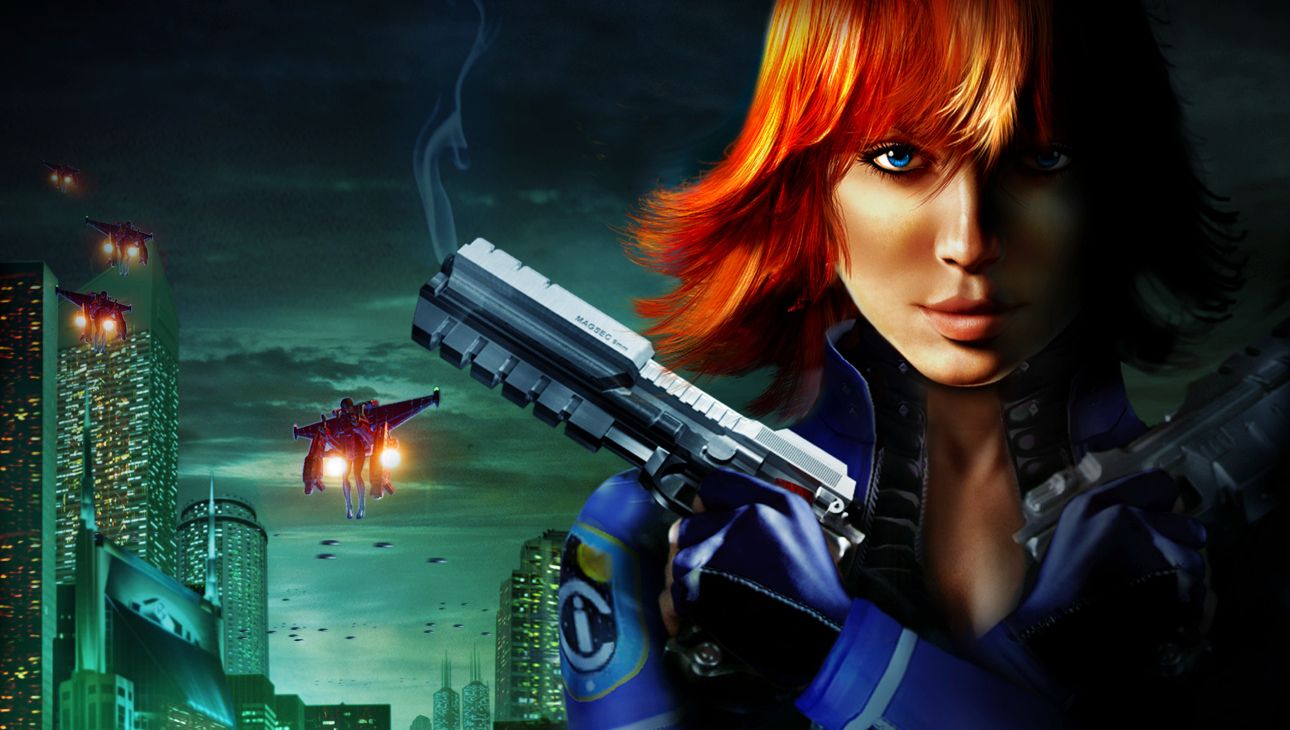





Published: Jun 7, 2016 08:12 am